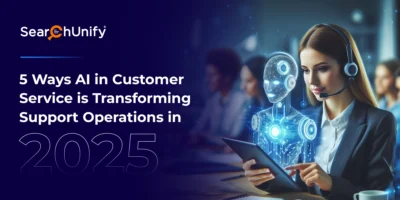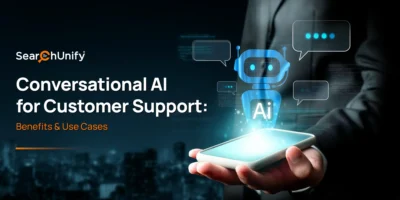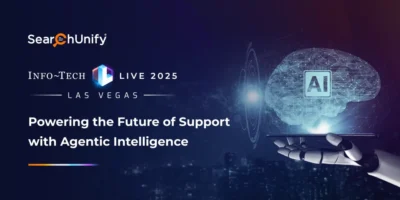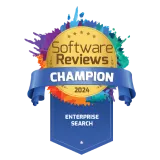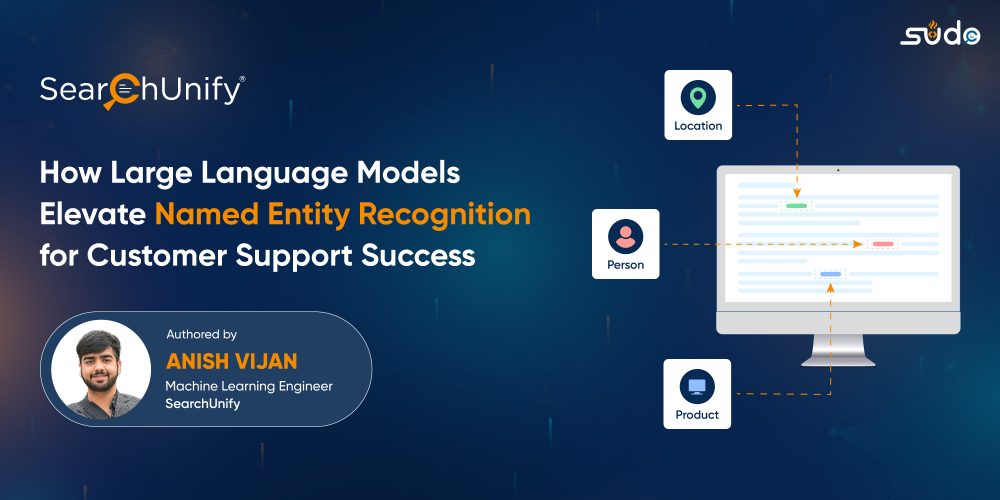
Imagine yourself on a thrilling treasure hunt, armed only with a map leading to a hidden chest. But here’s the catch: the map is in an unfamiliar language, leaving you perplexed.
In the digital realm, businesses often encounter a similar situation. Amidst a vast sea of unstructured information, extracting valuable insights to support their customers becomes an arduous task. Fortunately, there is a groundbreaking solution for combating the challenge: Named Entity Recognition (NER).
But while NER systems have been around for decades now, Large Language Models (LLMs) have unleashed a seismic shift, enhancing their accuracy and efficiency. But how? This blog post explains!
But First Thing First–What is Named Entity Recognition (NER)?
A named entity is a word or phrase that refers to specific real-world objects, such as people, organizations, locations, dates, or products. Named Entity Recognition (NER) is a sub-task of Natural Language Processing (NLP) that recognizes and extracts these entities within unstructured textual data.

Likewise, NER plays a pivotal role in the customer support domain by automating and streamlining information extraction from customer queries. This enables support agents to efficiently categorize and prioritize customer issues, resulting in faster and more effective resolutions.
For example: On September 20th, Jane Smith, a representative from SupportProMax, provided assistance to ABC Company, a client based in Sydney, Australia, regarding their network connectivity problems.
This is how NER automatically identified the named entities:
- Person: Jane Smith
- Organization: SupportProMax
- Location: Sydney, Australia
- Date: September 20th
Revolutionize Customer Support with Named Entity Recognition
NER enhances customer support workflows and empowers agents to deliver exceptional customer experiences. Here’s how:
Efficient Ticket Routing
As already discussed, NER automatically extracts key information from customer messages, such as customer names, order numbers, or product names. This helps the support team to route tickets to the appropriate agents or departments right off the bat. Result? Improved Mean Time to Resolution (MTTR) and customer satisfaction.
Sentiment Analysis
One of the key capabilities of NER is to determine named entities associated with the positive or negative sentiments of the customers. Integrating sentiment analysis with NER helps support teams spontaneously address customer dissatisfaction, enabling timely resolution.
Intelligent Content Recommendation
NER enables organizations to gain a holistic understanding of the user’s interests and preferences. By analyzing the named entities in a user’s search history, browsing behavior, or content consumption patterns, they can offer personalized recommendations to users, thereby leading to increased engagement and retention.
For instance, if a user frequently engages with articles on “artificial intelligence (AI)” and “machine learning (ML),” NER identifies these entities as user interests and suggests relevant content.
Empowering GenAI-powered virtual assistants with NER: The Key to Unlocking Customer Satisfaction
Undoubtedly, NER is transforming how the customer support industry works, making support services faster and more efficient. Well, it’s not over yet! NER supercharges GenAI virtual assistants, taking customer satisfaction to a whole new level. Let’s find out how!
Enhanced contextual understanding
NER helps these virtual assistants to identify the entities in the customer query like names, dates, locations, organizations, and so on. This identification assists them in understanding the context of the user query which leads to more accurate and relevant responses enhancing the user experience.
Personalized responses
Personalization is key when it comes to customer experience. NER with its capability of recognizing and extracting the entities helps the virtual assistants to extract the specific information from user query. This enables them to retrieve the relevant information from the knowledge database to solve the query.
For instance, if someone asks for weather in California, NER will help the virtual assistant to recognize “California” as a location thereby making it easier for it to provide weather results for the same.
Data Extraction and Analysis
NER enables the virtual assistants to extract valuable information from user interactions which can be analyzed to understand customer behavior, preferences, and trends. This helps improve the performance of the virtual assistants, thereby enhancing the user experience by delivering relevant and accurate responses
Examining the Shortcomings of NER Techniques
Entity extraction has been a part of the NLP landscape for a long time now. Traditionally, NER systems utilized ML algorithms to train models to extract entities based on context, syntax, and other linguistic properties.
However, the biggest challenge with these models is that they only recognize a limited set of native entities they were trained for. Businesses have to add taxonomy to define specific named entity categories or classes that align with their needs. Each time a new entity needs to be supported, they have to repeat the process of content annotation and model training, which is quite time-consuming.
Thankfully, the arrival of LLMs, like ChatGPT and others, bridge this gap by leveraging their pre-trained knowledge and contextual understanding. Let’s explore more!
The Next Frontier of NER: LLMs Paving the Way to the Future
LLMs rely on advanced deep-learning algorithms to understand context, generate coherent responses, and adapt to various linguistic nuances, making them valuable tools for NER.
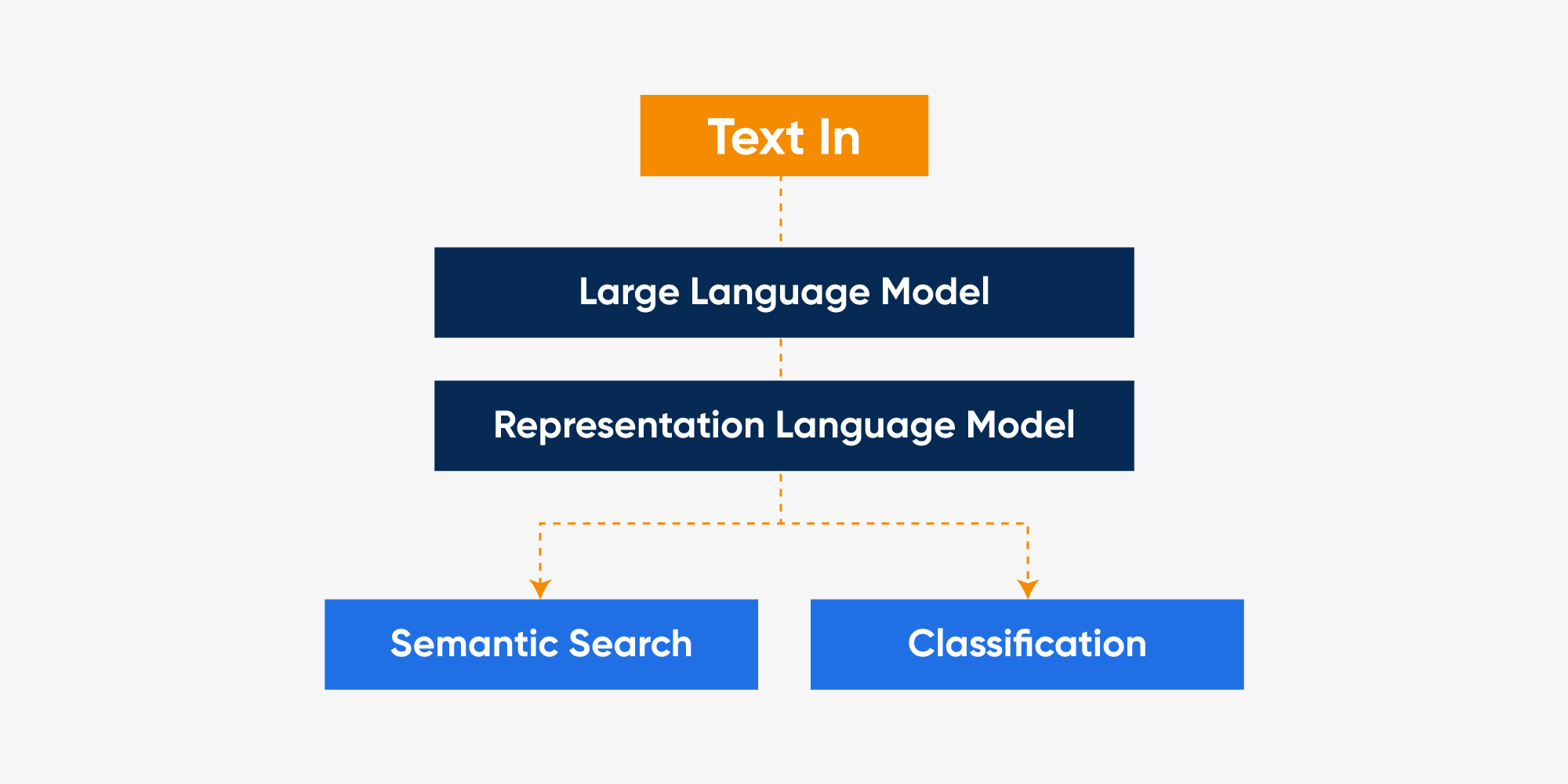
But the main question is: what is the magic bullet that empowers LLMs to overcome the limitations of traditional NER? The answer is Zero-shot classification.
Zero-Shot Classification
Zero-shot classification is a type of ML technique that allows LLMs to categorize and recognize entities without having specific training data.
At SearchUnify, we leverage zero-shot technology to provide a model with a set of predefined entity labels or categories and utilize a prompt or a textual description of the task. The model can then infer the appropriate entity class for a given text snippet, even if it has not been explicitly trained on that specific entity type. This is achieved by the model’s ability to understand the contextual information, patterns, and relationships between words and entities.
Prompt Engineering
While LLMs possess impressive capabilities, prompt engineering plays a significant role in optimizing their performance for NER. It involves crafting prompts or instructions to guide the model to focus on specific entities, enhance its understanding of context, and improve the accuracy of NER results.
The three components essential to design a well-engineered prompt involve:
- Context: A prompt should include a context that helps the model understand what it needs to accomplish.
- Data: This is the information that the model learns from. It includes examples or input that it can use to make predictions or generate responses.
- Continuation Description: The continuation statement in the prompt is used to guide the model on how to use the context and data to produce desired outputs, such as summaries, keyword extractions, or further dialogue interactions.
Given below is a practical example of an effective prompt:
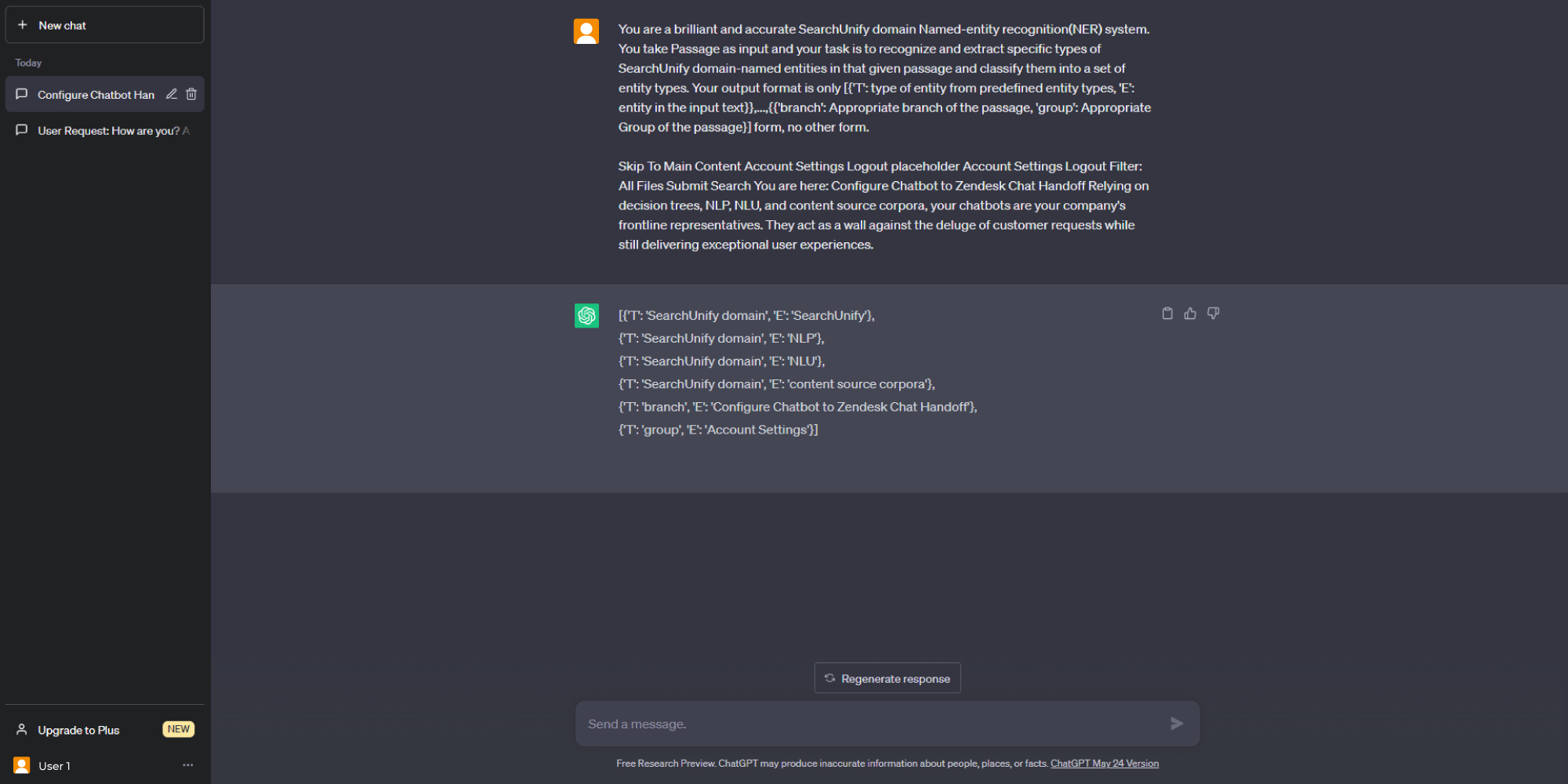
The above prompt discusses the configuration of a chatbot to enable Zendesk Chat handoff. It mentions that chatbots, powered by decision trees, natural language processing (NLP), natural language understanding (NLU), and content source corpora, serve as the frontline representatives of a company.
In this prompt, we gave the model enough context and data before passing an actual request that helped in retrieving the entities from the context swiftly. Impressive, isn’t it?
Time to Expedite Search Results with Zero-Shot NER!
Zero-shot NER is a groundbreaking way to expedite search results without compromising on relevancy. SearchUnify, the industry’s first LLM-integrated platform, leverages it to help businesses drive relevant and personalized customer support. Tune into this expert session to learn more!
Also, if you are interested in witnessing SearchUnify’s LLM-infused capabilities in transforming NER, request a live demo now!


